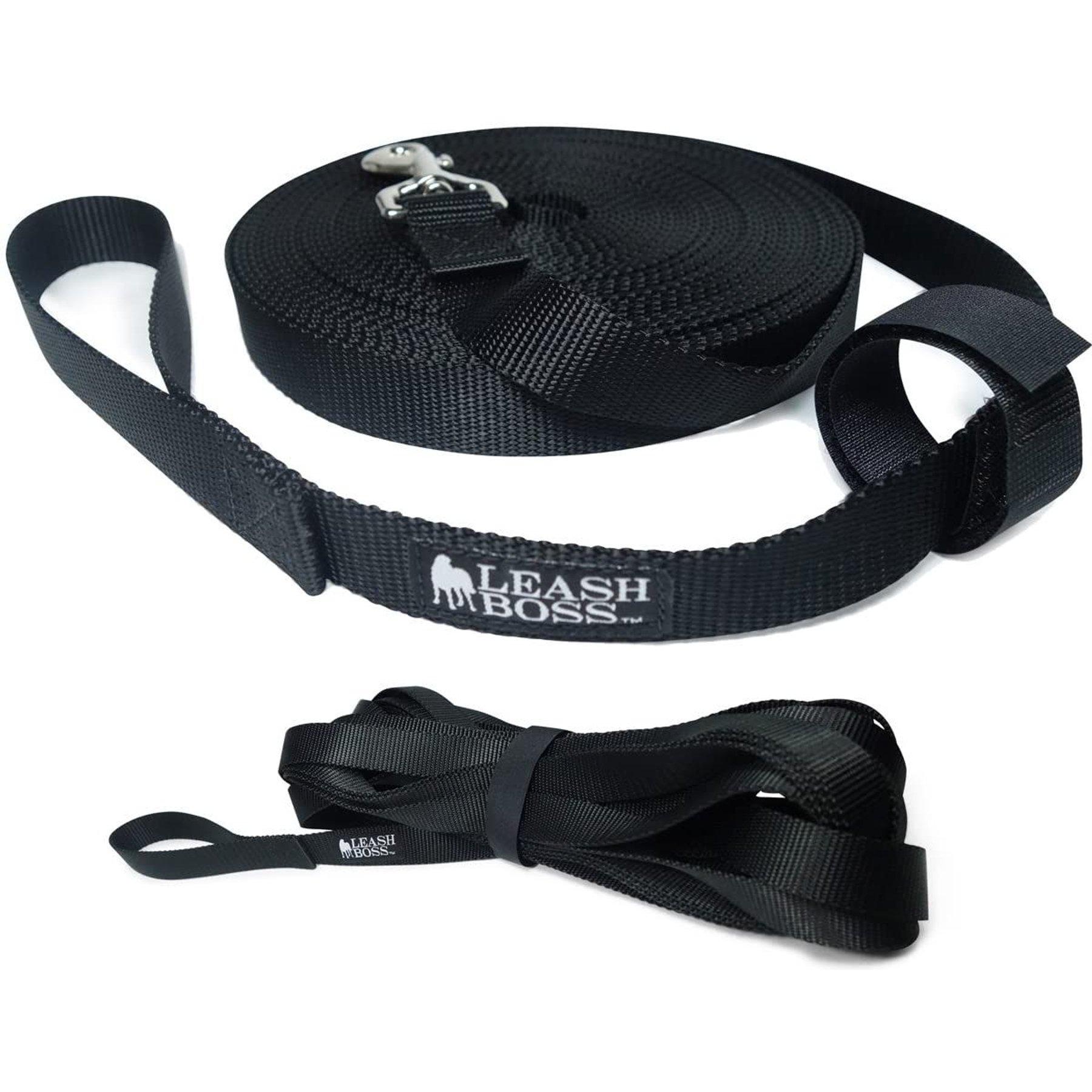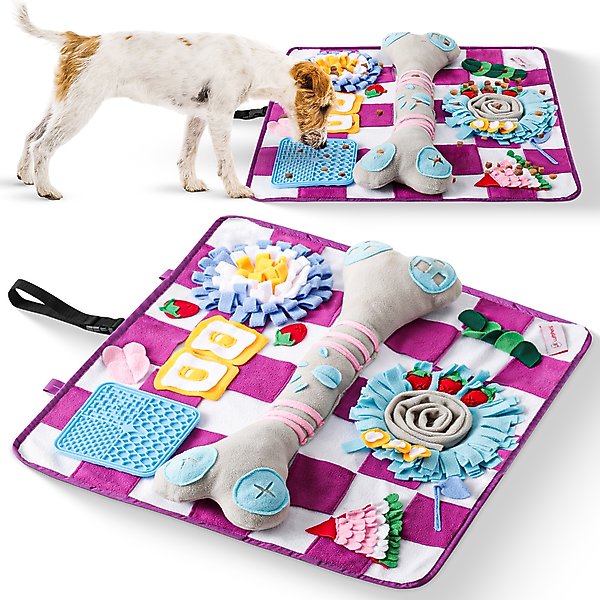What are the most obedient dog breeds? How about the least? Some dogs live to please. Others live to ignore you… at least until there’s food involved.
Whether you’re a first-time dog parent or training your fifth four-legged sidekick, obedience matters—and it’s influenced by more than just effort. Breed traits play a huge role.
In this guide, we’re breaking down the dog breeds most likely to follow your lead (literally), and the ones that may need a little extra patience, creativity, and high-value treats.
🐶 TL;DR — Most vs. Least Obedient Breeds
- Most obedient: Border Collie, Poodle, Golden Retriever, Labrador, German Shepherd
- Least obedient: Husky, Beagle, Chow Chow, Basenji, Basset Hound
- Obedience isn’t about IQ—it’s about breed instincts, motivation, and bond-building.
- “Stubborn” breeds often require more creativity and patience, not harsher training.
Why Keep Reading?
Because knowing your dog’s wiring helps you train smarter, not harder—and makes every “sit” and “stay” feel like a win for both of you.
Trainable Types
People-pleasers with focus & drive
Independent Thinkers
Stubborn but smart breeds
Training Tips
Why method > muscle
Top 5 Most Obedient Dog Breeds
These breeds are the overachievers of the canine world—quick learners, eager to please, and always ready to lock eyes with you for their next cue.
While individual personality always plays a role, these five breeds consistently rank high in obedience, trainability, and handler responsiveness.
1. Border Collie

No surprise here—Border Collies are often called the Einsteins of the dog world.
They’re not just smart; they’re hyper-focused and thrive on mental challenges.
Originally bred for herding sheep in complex terrain, they’re wired to follow commands quickly and read subtle body cues from humans. A well-trained Border Collie can learn hundreds of words and signals.
Best for: Active families, agility enthusiasts, or dog parents who love daily training games.
Already planning to adopt one? Check out our 200 Beautiful Border Collie Dog Names for Your New Pup!
2. Poodle

Behind the curly coat and show-ring reputation is a highly intelligent, adaptable dog. Poodles of all sizes—standard, miniature, toy—rank among the easiest to train due to their curiosity, work ethic, and sensitivity to tone.
They’re people-focused and love to perform, making them excellent companions for obedience, tricks, and even service work.
Best for: First-time owners who want a smart dog with style and versatility.
3. Labrador Retriever

Labs have it all: loyalty, smarts, and a strong desire to work with you—not against you.
Originally bred as gun dogs, Labs respond well to reward-based training and are highly food-motivated, making them quick studies for obedience, therapy work, and search-and-rescue roles.
Their only downside? If they’re not mentally and physically stimulated, they’ll invent their own games… like counter surfing.
Best for: Families, outdoor lovers, and people who want an eager companion.
4. Golden Retriever

Golden Retrievers are gentle, emotionally tuned-in, and incredibly responsive to their humans.
They’re not just trainable—they’re motivated by love. Their desire to please, combined with their patience, makes them ideal for therapy work, assistance training, and family life.
Just be mindful of boredom—they need mental engagement to avoid mischief.
Best for: Homes with kids, multi-pet families, and anyone looking for a loyal “shadow.”
5. German Shepherd

Known for their discipline, loyalty, and ability to perform complex tasks under pressure, German Shepherds thrive in structured environments.
You’ll find them serving in police, military, guide dog, and protection roles around the world.
They learn fast and remember well—but they’re also powerful and high-drive, so training must be firm, fair, and consistent.
Best for: Experienced owners, working dog homes, or active individuals committed to daily structure.
Top 5 Least Obedient Dog Breeds
Some dogs were bred to work closely with humans. Others? To think for themselves.
These breeds tend to march to the beat of their own drum. That doesn’t mean they’re not smart—quite the opposite. Many are so clever, they question commands instead of blindly obeying them.
If you’re drawn to one of these independent-minded breeds, just know this: you’ll need patience, creativity, and a sense of humor.
1. Siberian Husky

Beautiful? Absolutely. Obedient? Not always.
Huskies are natural escape artists with strong prey drives and independent streaks a mile wide. Originally bred to pull sleds across icy landscapes, they’re wired for endurance, not obedience drills.
They’ll learn commands—but only follow them if they’re in the mood.
Training Tip: Use short, high-energy sessions and mix in fun. Bored Huskies get destructive fast.
2. Beagle

With noses that never quit, Beagles are scent-driven explorers.
Their strong tracking instinct often overrides verbal cues, especially outdoors. While affectionate and food-motivated, they’re easily distracted and selectively deaf when sniffing something exciting.
Training Tip: Leash training and recall work need extra patience. Nose games help redirect that tracking obsession.
3. Basenji

Often dubbed the “barkless dog,” Basenjis are feline-level independent.
They’re clean, quiet, and smart—but don’t care much about pleasing you. Commands must be meaningful (to them), or they’ll simply ignore them.
Training Tip: Make tasks rewarding and optional-feeling. Power struggles won’t work with this breed.
4. Chow Chow

Elegant, aloof, and proud—Chow Chows tend to bond with one person and tolerate the rest.
They’re not naturally affectionate or eager to obey, and they don’t respond well to harsh corrections.
Their calm demeanor hides a strong will, so early socialization and consistent, respectful training are crucial.
Training Tip: Earn their respect through patience and routine. Don’t rush affection.
5. Basset Hound

Short legs, long ears—and a mind of their own. Basset Hounds are gentle but stubborn, often described as “slow to obey” not because they don’t get it, but because they’d rather sniff first, think later.
Their low energy can make them seem lazy in training, but really, they’re just laid-back scent machines.
Training Tip: Keep things upbeat and reward-based. Scent trails and games help focus their energy.
What “Obedient” Really Means to Your Dog
Not all dogs process commands the same way—and that’s not a flaw, it’s a feature.
A Labrador might drop everything to sit on cue, while a Beagle may pause to sniff 10 things first… then maybe consider your request.
That doesn’t mean the Beagle isn’t smart or capable—it just means their brain is wired for scent, not service.
For some breeds, obedience is about pleasing their person.
For others, it’s about problem-solving or navigating the environment around them.
Here’s what obedience often actually looks like across different breed groups:
- Herding breeds (like Border Collies or Aussies) tend to lock into your body language and want to “work” with you.
- Scent hounds (like Beagles or Bassets) are more motivated by smells than cues—they follow their nose, not your finger.
- Sighthounds (like Greyhounds or Afghan Hounds) are independent and need training to feel like collaboration, not control.
- Terriers (like Irish or Jack Russell Terriers) love to challenge authority. For them, training is a negotiation.
Understanding your dog’s background makes obedience feel less like a battle—and more like teamwork.
Top Tools for Training Every Breed Type
No matter your dog’s personality, the right gear can make training easier, faster, and way more fun.
Here are five tools trainers swear by (and most dogs love):
1. Long Line Leash
Perfect for working on recall (“come”) with a safety buffer. Gives your dog space to explore while keeping you in control.
2. Clicker
Great for marking the exact moment your dog does something right. Especially helpful for timing-sensitive breeds like Poodles or Shepherds.
3. High-Value Treat Pouch
Keep rewards handy and consistent—especially useful for food-motivated breeds like Labs and Goldens. Bonus: no pockets full of crumbs!
HIGH-CAPACITY & HANDS-FREE – This large dog treat pouch holds more treats, toys, and even tennis balls than most, with a built-in poop bag holder for quick clean-ups. Multiple wearing options (shoulder strap, waist belt, or clip) keep you comfortable and hands-free. Includes two training clickers, roomy storage for personal items, and a durable, easy-to-clean nylon design—perfect for training sessions at the park or on the go.
4. Flirt Pole
This chase-style toy tires out energetic dogs quickly (hello, Huskies). Use it to reward focus and burn energy before training.
5. Snuffle Mat
Ideal for scent-driven breeds. Let your dog “hunt” for treats to engage their natural instincts and build calm focus before obedience work.
Keep your pet entertained, calm, and mentally stimulated with this colorful veggie-themed snuffle mat. Great for slow feeding and reducing anxiety, it encourages natural foraging and play. Lightweight, washable, and anti-slip—perfect for small pets at home or on the go.
Pro Tip: Training isn’t about forcing behavior—it’s about creating a system your dog understands and enjoys.
Why Obedience Isn’t Everything
Before you rush to adopt a “trainable” breed—or avoid a “stubborn” one—remember this: obedience is only one part of the bond.
Some dogs follow commands instantly. Others take a beat… or five. But that doesn’t mean one dog is better than the other. It just means they’re wired differently.
A Basenji may not sit when you say so, but they’ll curl up beside you every night like clockwork. A Husky might ignore your recall, but howl in joy when you come home.
What really matters is your connection, your patience, and your ability to meet your dog where they are—not where a list says they should be.
With trust, time, and positive reinforcement, even the so-called “least obedient” breeds can become your most loyal companion.
Author
-

Hi there! I'm Nicole, the editor-in-chief and one of the writers here at DogVills. I've been a dog owner for most of my adult life and a dog lover for much longer than that. I grew up with a wonderful German Shepherd named Jake, who I loved SO much that I named my son after him. When I'm not writing for DogVills or my own site, Pretty Opinionated, I love spending time with my teenager (when he actually lets me) and my Pharaoh Hound, Freya. I'm also an avid reader AND a total TV fanatic.
View all posts








